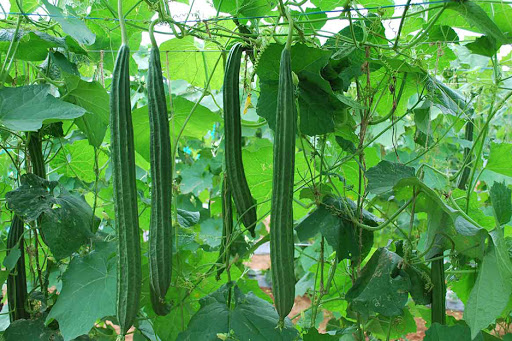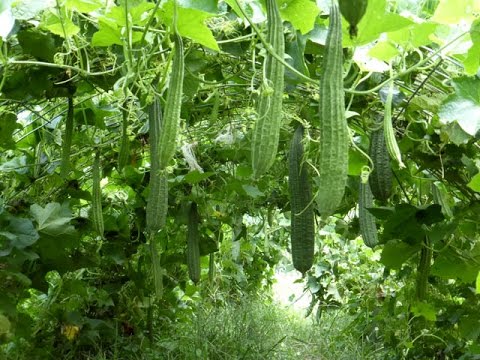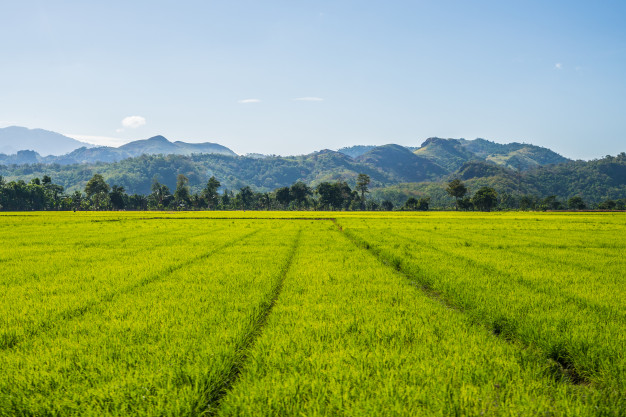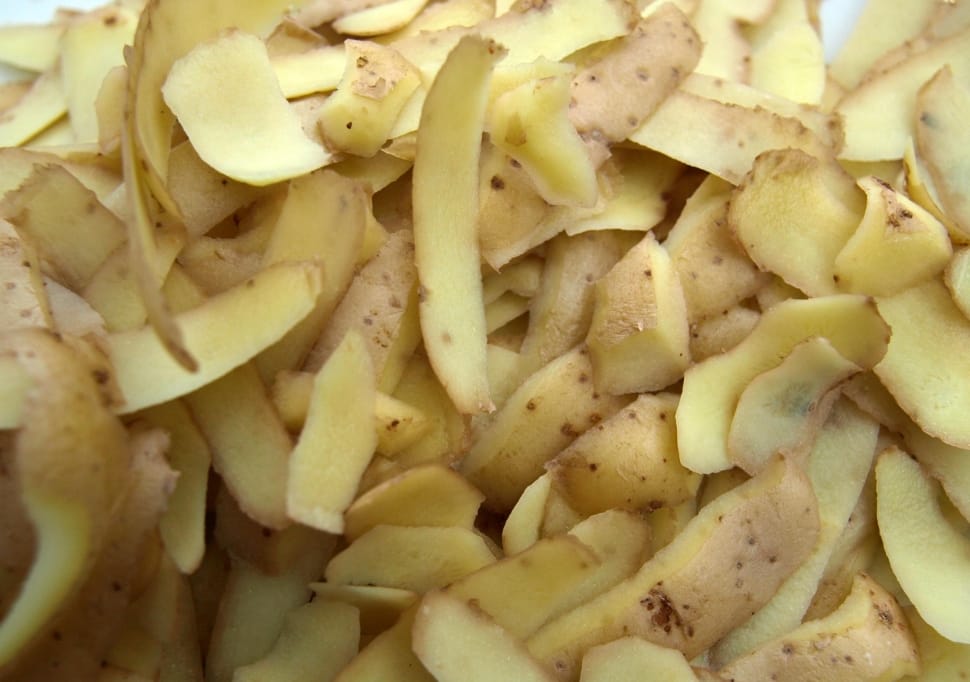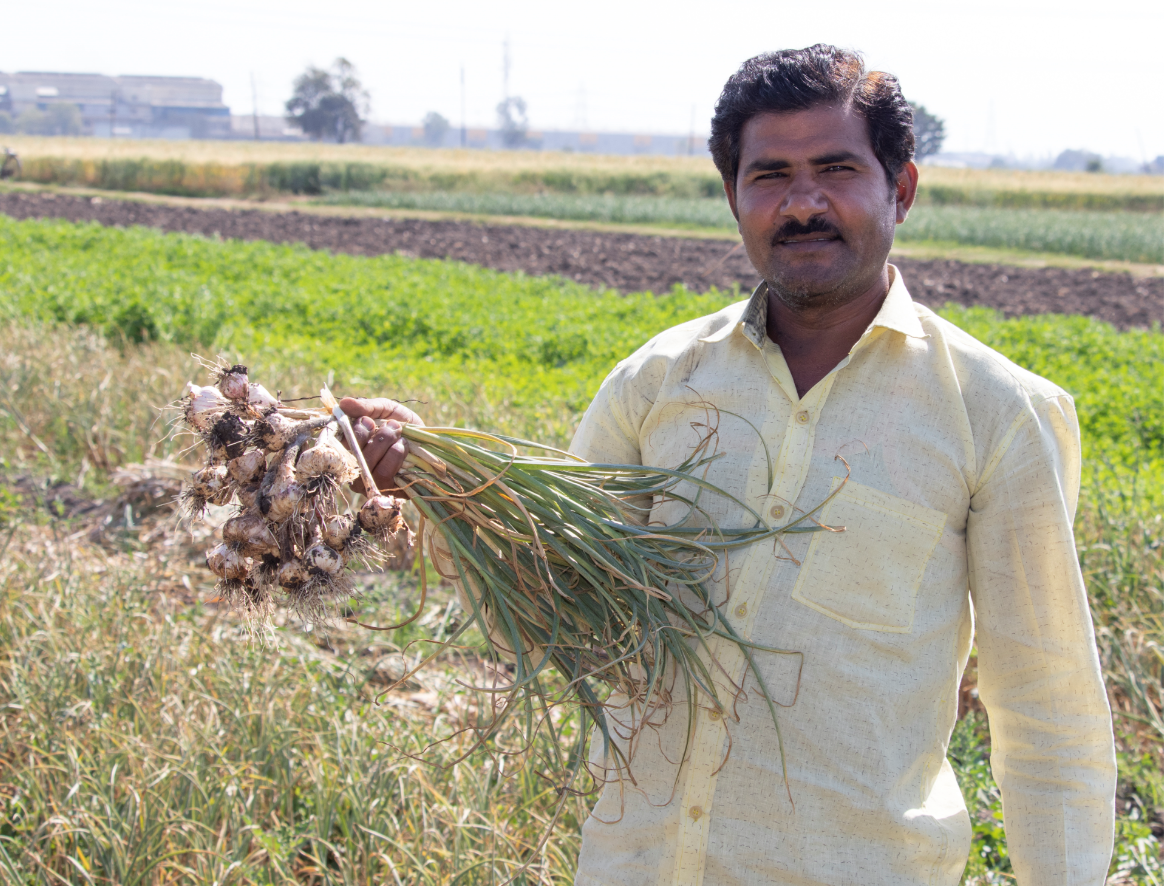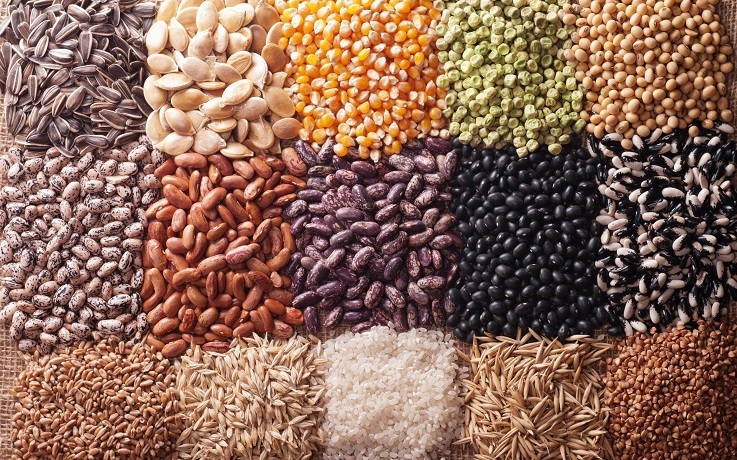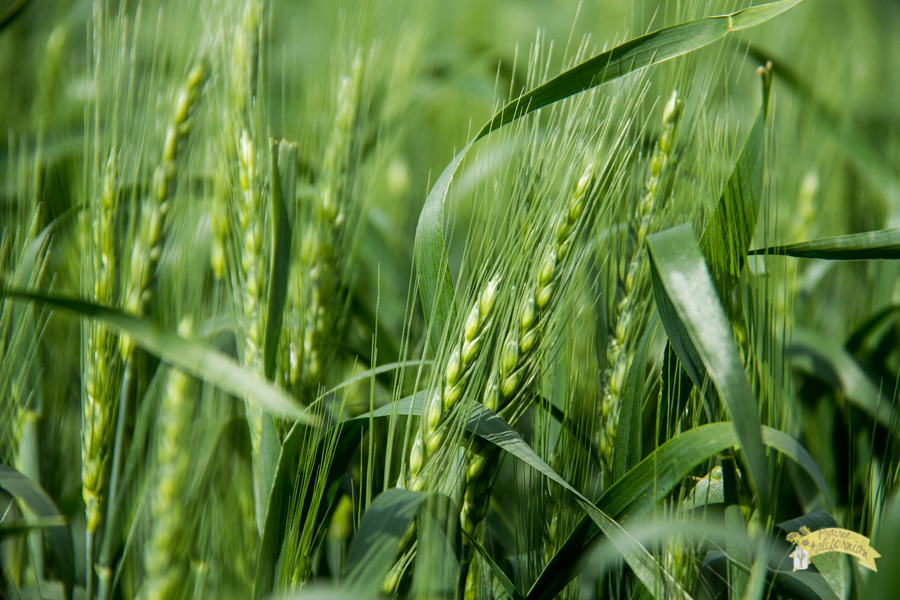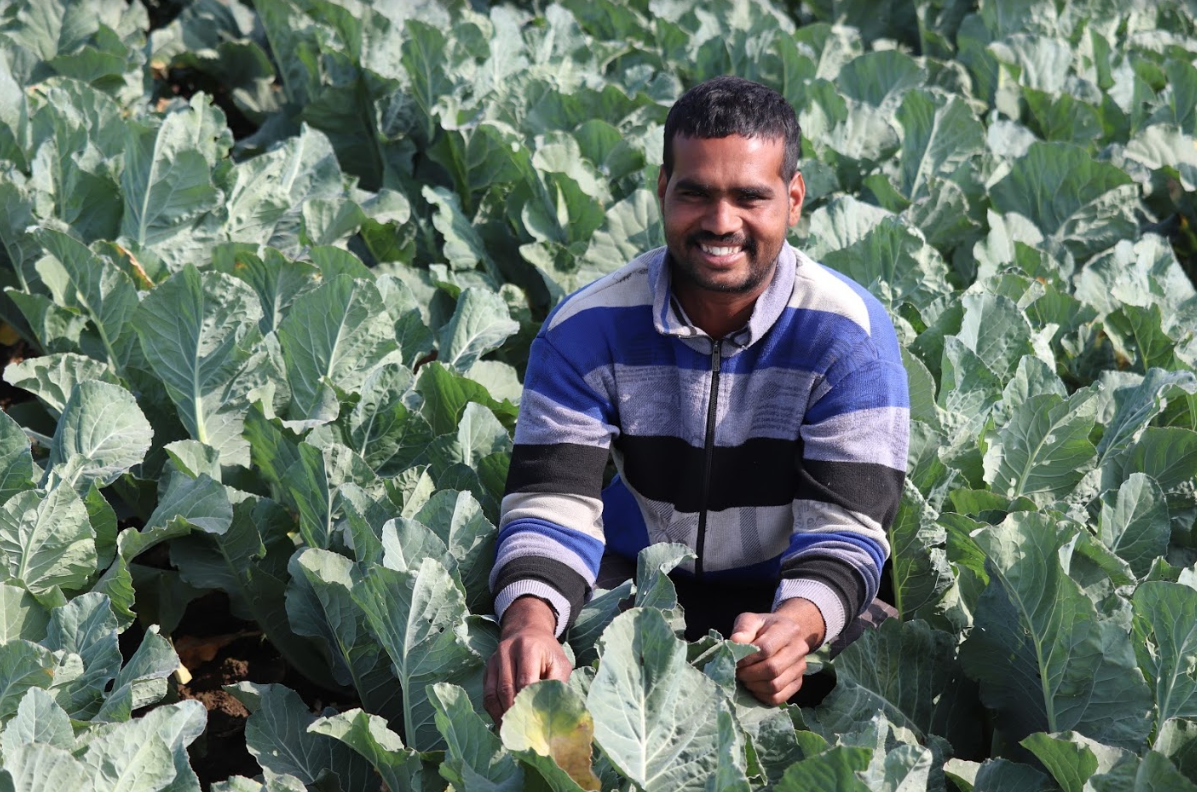- Ridge gourd is a good source of calcium, phosphorus, iron and vitamin A.
- It is cultivated in hot and humid climates.
- The temperature should be 32-38 degree centigrade.
- The drainage method is considered more suitable for sowing luffa.
- During summer, its crop should be irrigated at regular intervals of around 5-6 days.
- If its harvesting is delayed, then the fibers become hard fibers.
Farmers can get better income by sowing Aarti variety (VNR SEEDS) of Ridge gourd
| SN |
AARTI RIDGE GOURD (VNR SEEDS ) |
|
| 1. | Sowing period | March |
| 2. | Seed quantity | 1-2 kg/acre |
| 3. | Sowing distance between ridge/row | 120 -150cm. |
| 4. | Sowing distance between plants | 90cm. |
| 5 | Sowing depth | 2- 3 cm. |
| 6. | Colour | Attractive green. |
| 7 | Size | length 24- 25 cm., width – 2.4 inch |
| 8 | Weight | 200 – 225 gram |
| 9 | First harvest | 55 day |
What is the suitable climate for the cultivation of pumpkin, bitter gourd, cucumber, watermelon, etc.?
- Cucurbitaceae crops are a subtropical vegetable and require hot and humid climatic conditions for its fast growth and higher yield.
- Night and Day temperature of 18-22° C and 30-35° C respectively is optimum for its proper growth and high fruit set.
- The seed germination is fast at the temperature range of 25-30° C.
- The crop grown at optimum temperature has a higher proportion of female flowers and fruit per plant.
Don’t throw potato peels, they are equally important!
- Potassium is found in potato’s peel too, which helps a lot in controlling blood pressure.
- It Protects against UV rays.
- Potato peel contains abundant nutrients which help in correcting the metabolism of the body.
- potato peels are very beneficial for our health as they contain a good amount of iron, which will reduce the risk of anaemia.
Keep the following things in mind to prevent onion and garlic bulbs from rotting.
- Temperatures and relative humidity are important factors for the storage of onions and garlic for longer periods.
- The Moisture is more than 70 percent from July to September, which increases the chances of rotting onion bulbs.
- While in October-November, the temperature gets lower, which increase the problem of sprouting increases in onions
- For better storage, the temperature of storage houses should be between 25-30 °C while the humidity should be between 65-70 percent.
Gramophone’s Village Adviser won award for increasing farmers’ production
Today, what the farmers need the most for better production is the availability of the right options at the right time. And we at gramophone understands this need of farmers very well. That’s why, due to the continuous efforts of Gramophone, more than 3 lakh farmers have joined Gramophone and are writing a new story of prosperity.
And this passion of Gramophone to make farmers prosperous is fuelled by its village advisors, who are locally known as “gramophone gram salahkars”. One such passionate and hard-working advisor is Mr Sanjay Patidar, who has increased the fertility of fields of many farmers in his region using the “Soil Samridhi Kit”. The soil samriddhi kit is a kit launched by gramophone to increase the fertility of the field. You can also order the kit through gramophone’s mobile app or by giving a call on its toll-free number.
Our Village Advisor Sanjay had played a very important role in promoting the soil samriddhi kit amongst the farmers. He held a countless meeting with the farmers and also visited their farms multiple times to tell them how soil samriddhi kit increases the growth, yield and quality of the crops, so that the farmers can get the profit they deserve.
Sanjay’s determination, right planning and hard work have paid off and he has won the title of becoming the first Soil Samridhi Kit Centurion. Sanjay Patidar has emerged as a unique example who has proved that enriching the life of farmers is one of the most satisfying thins in the whole world, and if you do this with full dedication and hard work, then you can do miracles.
ShareGood news for farmers, government lifted the ban on onion exports
To protect the interests of farmers, the government has lifted the six-month-old ban on the export of onions on 26th February. This decision will provide farmers with a big market for their onion crop and thus they can earn more profit. There was a major need for such step as the prices are likely to fall heavily due to bumper production of rabi crops especially onion.
It should be noted that in September 2019, the government had imposed a ban on the export of onions due to the rapid increase in its prices. But the conditions have changed now and the onion rates had stabilized. Along with this, there has been a rapid growth of onions this year in the country, because of which, Food Minister Ram Vilas Paswan has announced to lift the ban on the export of onions.
ShareSeeds play an important role in doubling the income of farmers: Union Agriculture Minister
Seeds play a very important role in the production of any crop. The Union Minister of Agriculture and Farmers Welfare Shri Narendra Singh Tomar has also stated the importance of seeds in farming while addressing the Indian Seed Congress – 2020.
In the event, he said that India is an agrarian country and the economy of our country is majorly dependent on villages and agriculture. While talking about the role of seeds, he said that “due to the research and contribution of scientists and seed producers, India has not only become self-sufficient in terms of food grains but has also succeeded in setting a record by producing more than our requirement.
Gramophone also understands the importance of seeds for better agriculture and hence delivers only the best quality seeds to the farmer’s home, and that’s too without any delivery charge. Farmers can order these seeds through the ‘Market’ section of Gramophone agriculture App. They can also order it by giving a miss call on gramophone’s toll-free number 1800-315-7566.
ShareBenefits of spraying potassium-rich fertilizer in wheat crop
- potassium regulates the opening and closing of stomata, which promotes the process of Photosynthesis.
- Potassium is also responsible for Protein and starch synthesis in plants.
- Potassium always plays a good role in drought resistance.
- Potassium has an important role in the activation of many growth-related enzymes in plants.
- Potassium helps in increasing the resistance capacity against various diseases of the plant.
Good news! Now all beneficiaries of the PM Kisan scheme will get KCC
There’s good news for Indian farmers. The central government had announced that all the beneficiaries of the PM Kisan scheme will be issued a Kisan Credit Card (KCC). The government has also started a 15-day special campaign to issue these KCC cards. According to a media report, around 14 crore farmers will get the benefits under this scheme.
What is the KCC scheme?
Under the Kisan Credit Card scheme, the farmers will get a card, through which they can get a loan of up to Rs 3 lakh, and that’s too at an interest rate of just 7 per cent. The farmers would also get an additional discount of 3 per cent if they deposit the amount within the given time period. Which means, the farmers will now have to pay only 4 per cent interest on the Kisan Credit Card loan.
The central government has issued all the Detailed instructions regarding this campaign to the Chairman of NABARD, the Managing Directors of all banks and also to the Governments of all the States / UTs. Each bank and Government of each state/UT have been advised to list all those beneficiaries of the PM-Kisan scheme who do not have a KCC. Apart from this, they are also advised to contact all these beneficiaries of the scheme through the concerned departments.
Share
